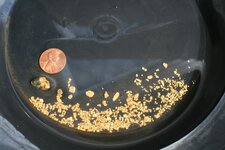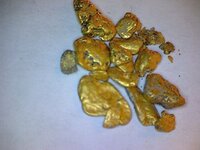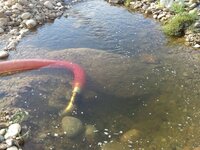northern_sierras
Jr. Member
- May 28, 2013
- 60
- 29
- Primary Interest:
- All Treasure Hunting
I prospect on a creek behind my house which contains only fine gold and got 1/4 ounce of flood gold relatively fast from a couple spots on the bank. I've only found gold on the top layers of dirt, and Im guessing the gold was placed there from the 97 flood.
Anyway the gold is only on the top 12" of dirt, and i would think after 18 years and all the snow and rain we get would have pushed it down further? How long does it take for fine gold to move further into the ground? Does gold move down faster in the stream bed than on the bank?
There is one particularly deep pool (about 6ft deep) that i assume gold would have fallen out at during the flooding. What is the best way to sample the bottom of that pool?
PS- There is very little exposed bedrock on this creek.
Anyway the gold is only on the top 12" of dirt, and i would think after 18 years and all the snow and rain we get would have pushed it down further? How long does it take for fine gold to move further into the ground? Does gold move down faster in the stream bed than on the bank?
There is one particularly deep pool (about 6ft deep) that i assume gold would have fallen out at during the flooding. What is the best way to sample the bottom of that pool?
PS- There is very little exposed bedrock on this creek.
Amazon Forum Fav 👍
Upvote
0








